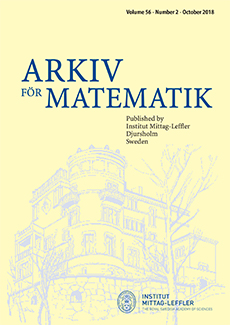Abstract
The study of Hamiltonian graphs began with Dirac’s classic result in 1952. This was followed by that of Ore in 1960. In 1984 Fan generalized both these results with the following result: If G is a 2-connected graph of order n and max{d(u), d(v)}≥n/2 for each pair of vertices u and v with distance d(u, v)=2, then G is Hamiltonian. In 1991 Faudree–Gould–Jacobson–Lesnick proved that if G is a 2-connected graph and |N(u)∪N(v)|+δ(G)≥n for each pair of nonadjacent vertices u, v∈V(G), then G is Hamiltonian. This paper generalizes the above results when G is 3-connected. We show that if G is a 3-connected graph of order n and max{|N(x)∪N(y)|+d(u),|N(w)∪N(z)|+d(v)}≥n for every choice of vertices x, y, u, w, z, v such that d(x, y)=d(y, u)=d(w, z)=d(z, v)=d(u, v)=2 and where x, y and u are three distinct vertices and w, z and v are also three distinct vertices (and possibly |{x, y}∩{w, z}| is 1 or 2), then G is Hamiltonian.
Citation
Ronald J. Gould. Kewen Zhao. "A new sufficient condition for Hamiltonian graphs." Ark. Mat. 44 (2) 299 - 308, October 2006. https://doi.org/10.1007/s11512-006-0026-5
Information





